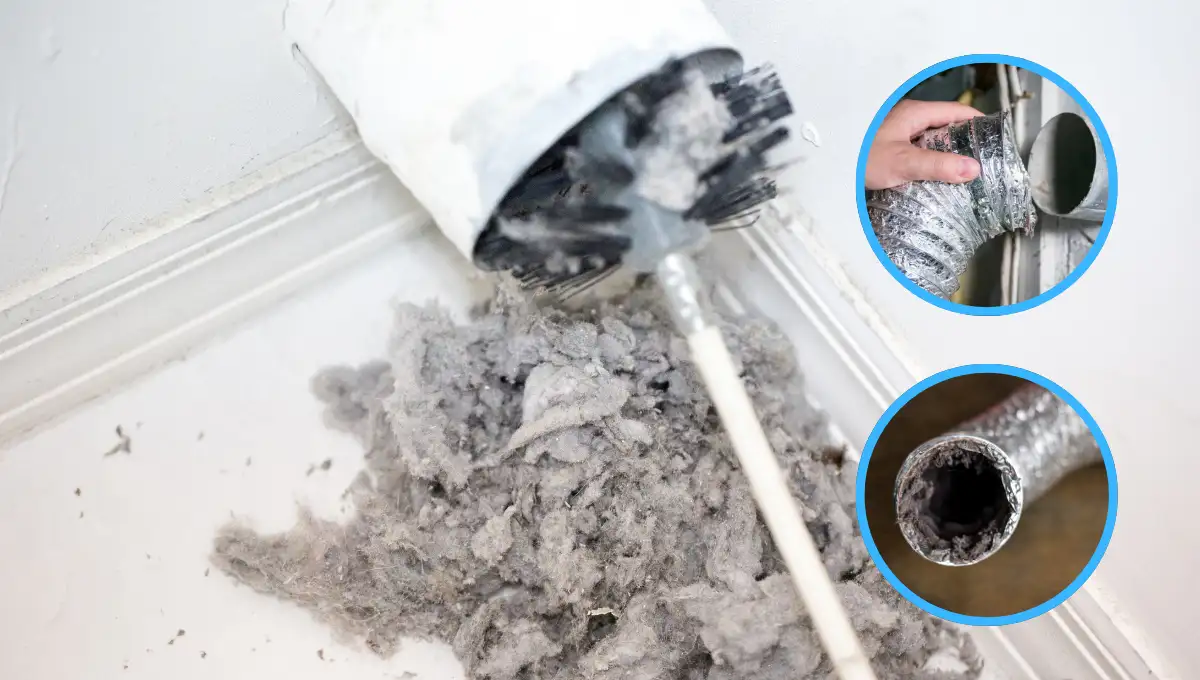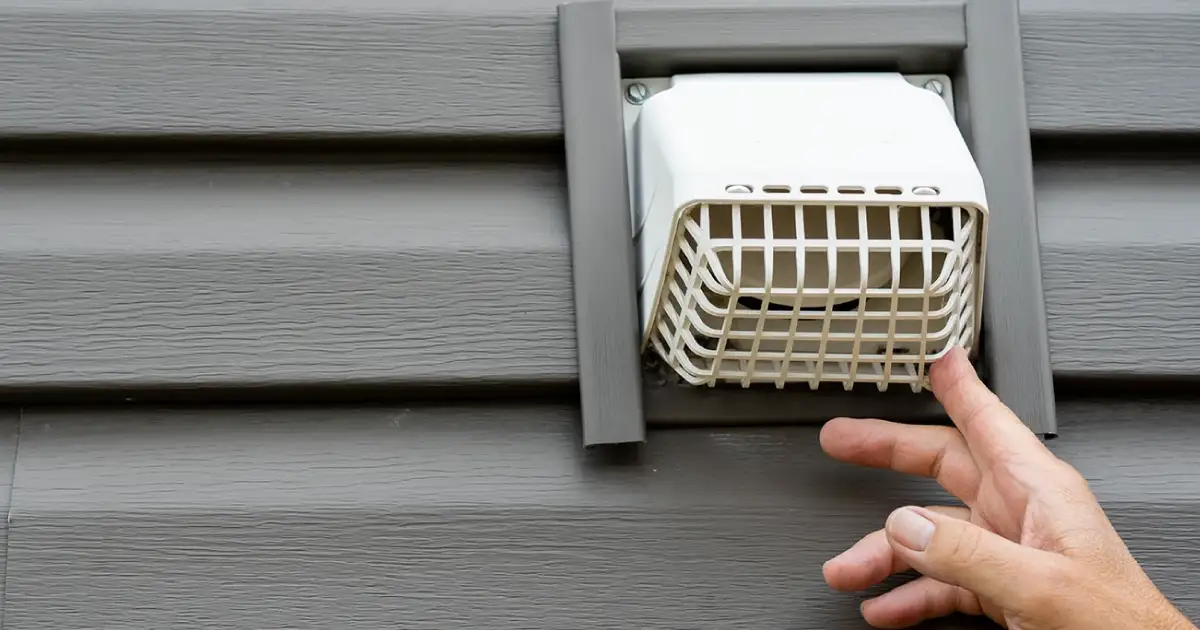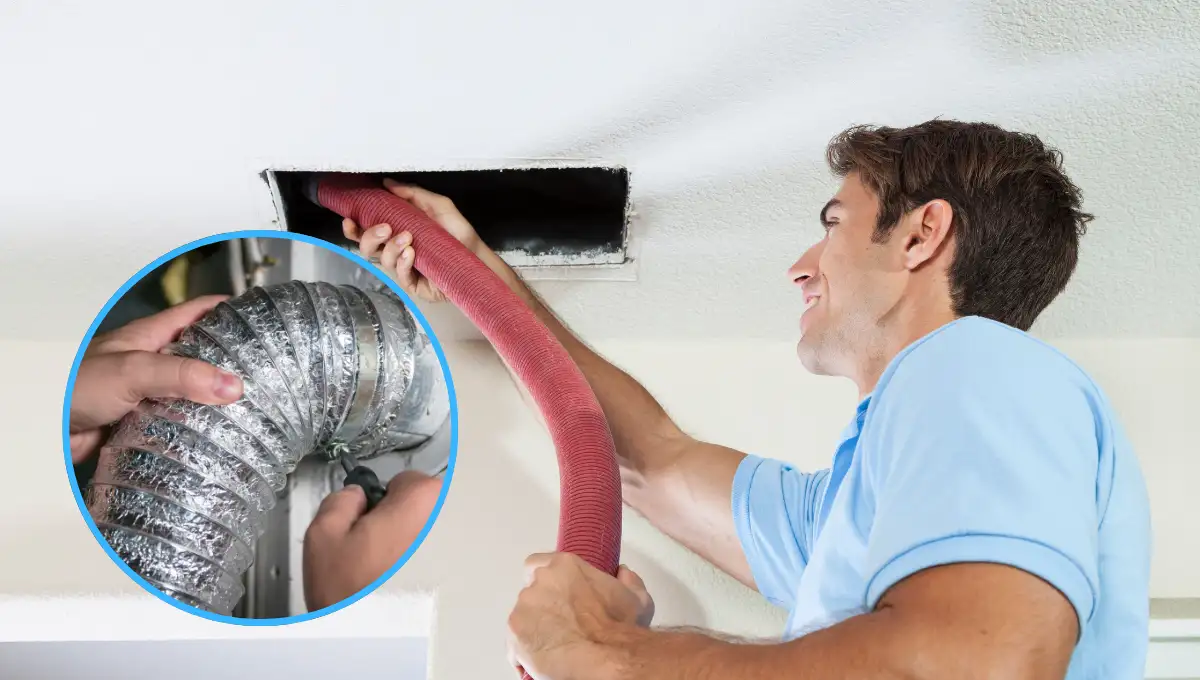People may want to vent a dryer into a garage to free up space in their laundry room. Plus, they want to avoid the hassle of installing a vent pipe through the walls of their home. But can you vent a dryer into a garage, actually?
To put it simply, You might want to vent your dryer into the garage for convenience, but it’s not a good idea because it can cause problems like —
- mold,
- fire hazards,
- and poor air quality.
Keep reading to learn the details of this topic.
So, is It Really Possible to Vent a Dryer Into a Garage?
Why not? It’s possible and seems like an easy solution, but venting a dryer into the garage can create a whole new set of headaches.
Here’s why this shortcut might end up costing you more time, money, and maybe even your health down the line:
Moisture Trouble
When dryers pull water from your clothes, they create a lot of moisture. If you let all that moisture into your garage, it’s trouble. Studies found that doing this can make your garage really humid – up by 70%!
This extra moisture is like a welcome mat for mold, which can spread from your garage into your home. This will create breathing problems and damage your belongings.
Venting your dryer into the garage might seem convenient, but it can lead to big problems.
Poor Air Quality
If your dryer sends its wet air into the garage, it can make the air inside your home not so good to breathe. This gives a nice place for bacteria and allergens to grow, and they can move into your living space when you open the door between the garage and your home.
So, if you decide to vent into the garage, the air you breathe indoors might not be as healthy.
Lint Issues

Even though your dryer has a lint trap, it still lets out some lint and dust. If you vent this stuff into your garage, it’s like making a factory for lint!
The National Fire Protection Association says that between 2014 and 2018, fire departments in neighborhoods came to around 13,820 home fires each year where dryers caused the fire to start.
These fires led to about —
- seven people dying,
- 344 people getting hurt,
- and around $233 million in damage to homes every year.
So, that fluff hiding in your dryer vent is a serious fire danger just waiting to happen. So, venting into the garage might seem handy, but it’s risky business.
Fume Issues (Gas Dryers Only)
If you’ve got a gas dryer, sending its fumes into the garage is super risky. Gas dryers make a bit of carbon monoxide, which you can’t smell and can be really dangerous if it builds up in a closed space.
The Environmental Protection Agency says carbon monoxide can —
- give you headaches,
- make you dizzy,
- or even deadly.
Scary stuff, right? So, it’s super important to vent your gas dryer outside to keep everyone safe.
Oh, and know that it’s not recommended to vent an electric or tumble dryer into a garage either. While less risky than gas, moisture and lint buildup can still cause mold and fire hazards.
Plus, you might think about whether it is legal to vent a dryer into a garage or not.
The legality of venting a dryer into a garage depends on your local building codes. In many areas, it’s actually not legal because of the safety and health risks involved.
Besides Venting a Dryer into a Garage, Where Does a Dryer Vent Shouldn’t Go?

We all know that venting your dryer into the garage is a bad idea, but there are other sneaky hiding spots to avoid!
Here’s where your dryer vent should NEVER go:
Crawl Space
If your dryer vent has to go through your crawlspace to get outside, that’s okay. But don’t let it vent straight into the crawlspace – it’s a bad idea.
Think about all the damp air – it’s perfect for mold to grow. Mold isn’t just gross – it’s dangerous too. It can even cause fires and health problems.
If your vent absolutely must go through the crawlspace, call a professional. They’ll use special materials to make sure it’s done safely.
Across the Whole House
Dryer vents have a limit on how far they can go!
Ideally, your vent shouldn’t be more than 25 feet long from the dryer to where it lets out outside. The National Fire Protection Association says longer vents can make your dryer work too hard and get too hot, which might cause fires.
If your laundry room isn’t near an outside wall, there are special fans that can help push air through longer vents. But remember, they’re not as safe or efficient as a shorter vent.
Want to learn, “Are indoor dryer vents safe?” Give our informative blog a thorough read.
Next to Outdoor Appliances
Keep your dryer vent at least a few feet away from any outdoor appliances like furnace vents, air conditioners, or even fancy grill setups.
Why?
That hot, moist air and lint can damage these appliances over time. Nobody wants a broken BBQ on top of a potential dryer fire!
So, What’s the Solution?
Instead of venting into the garage, you can try these options:
Vent Outside Through Many Possible Ways

The best choice is to vent your dryer outside. Let’s check those out.
Venting through a wall outside. Even if your laundry is in the middle of your home, your dryer should vent outside in the shortest, straightest path possible.
Venting from the basement to outside. Lots of dryers are in basements to save space. If yours is too, look for a hood outside near the ground where the vent comes out.
Venting from the attic through the roof, if it’s done right. It’s not the best choice because there might be things blocking the way, and roof vents are hard to clean. But sometimes it’s the only option.
Venting out a window. This is a quick fix if you’re waiting for a professional or if you have a portable dryer.
Also, you can read our helpful blog to learn how to stop dryer lint from blowing outside.
Choosing the Right Path
Flexible Metal Duct: You can use a flexible metal duct which is a popular option for dryer vents because it’s easy to bend around corners and tight spots. But be careful not to bend or crush it too much, or it could block airflow.
Rigid Metal Pipe: This is a stronger and more permanent choice. It’s perfect for straight lines, no less than .016” thick, but you might need extra parts for bends.
Up, Up, and Out
Try to make your dryer vent slope slightly upward as it goes outside. This stops water from gathering inside.
Plus, dryer vents must be at least 12 inches off the ground. They should also have a backdraft arrestor to stop air from coming back in.
Go Ventless
Think about getting a ventless dryer. They use special tech to take moisture out of your clothes and vent it out as water vapor instead of hot air with lint. With a ventless dryer, you don’t have to worry about venting at all, so you can put them anywhere.
Indoor Venting Kits
If you can’t vent outside because of your house setup or rules, indoor venting kits are a handy choice. These kits catch lint and moisture from your dryer and filter it, so you can release the air back into your home. Just remember to empty the water tank regularly to avoid spills.
Heat Recovery Ventilator (HRV)
If you want to be eco-friendly and save energy, an HRV might be right for you. It takes the heat from the moist air from your dryer and uses it to warm up fresh air coming in. This keeps your garage dry and lowers your heating bills.
Laundry Room Addition
If you can, think about adding a laundry room to your home. This lets you install a proper venting system without messing up other areas like your garage.
Plus, it makes doing laundry easier and adds value to your home.
Calling in the Experts

If you’re not sure how to install the dryer vent yourself, ask a qualified technician for help. They know how to do it safely and well.
Bonus tips: Wherever your dryer vents, make sure to keep it clean.
- Clean the lint trap after every load,
- check the vent pipe for blockages regularly,
- and maybe even get a professional cleaning sometimes.
If you’re wondering whether you can run a dryer without the vent hose, read our informative blog for detailed answers.
Contact a Pro
If you need professional help or guidance regarding where to vent your dryer and cleaning, choose Steam Express in Houston, Texas.
Our licensed and insured team thoroughly cleans your dryer vents, removing lint and improving performance. We use eco-friendly methods to keep your home safe and efficient.
Don’t wait—schedule your cleaning today and enjoy our special discounted rate for a cleaner, safer home.
Call us now for a free estimate!
Wrapping Up
So, hopefully, now you’ve got a pretty good idea of your concern, “Can You Vent a Dryer Into a Garage?” Venting a dryer into a garage is not recommended because it can cause high humid air, mold, and fire risks. Always follow proper venting guidelines to keep your dryer and home safe and long-lasting.

